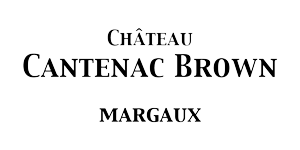Chateau Cantenac Brown, Grand Cru Classé from 1855, in Margaux was founded 200 years ago by a Scottish John Lewis Brown. Recognizable by its spectacular Tudor-style chateau, Cantenac Brown is still family owned today and has announced the construction of a new, unique winery made entirely of raw earth.
Wine and climate change are intimately linked. Indeed, global warming has many impacts that affect the Bordeaux vineyard and Château Cantenac Brown. The development of extreme events, rising temperatures, droughts are all elements to be taken into account in the vine management. Consequently, it is necessary to carry out adaptation actions in order to limit the effects of climate change on the wine. In the longer term, these actions guarantee the quality of the wines.
What is climate change?
Climate change is a natural phenomenon. The earth has always experienced variations in climate and temperature: the Sahara was once a lush forest and penguins roamed the shores of the Mediterranean. The greenhouse gases responsible for global warming are naturally present in the biosphere. So even if humans did not inhabit the Earth, climate change would still occur. Nevertheless, the changes we observe today are different from the climatic changes that have punctuated the cycles of our planet. The volume of greenhouse gases in the atmosphere is significantly increased by human activity. The more gases there are in the atmosphere, the less heat can escape. So the problem is that the occurrence of these changes are much faster than before. So fast that they could compromise the ability of a large number of species to adapt to these changes.
The impact of climate change is already partly visible to everyone. Glaciers and ice floes are melting, and this water, which has become liquid again, is joining the seas, thus raising the level of the oceans. This rise in water levels threatens human settlement since in 2010, half of the world’s population lived less than 150km from a coastline. In the long term and if trends continue to evolve, some territories will be submerged or too dry to continue to be inhabitable, the cultivable areas will decrease, the drinking water resources will decrease.
Vines are a good indicator of the effects of climate change
Agricultural production is greatly threatened by climate change. The vine is a plant that needs very specific conditions to be cultivated at its best. It will give quality grapes only at certain temperatures, with a certain rainfall and on specific lands. The different phenological stages arrive at precise moments at the rhythm of the seasons and of the temperature evolutions which allows to follow year after year the growth of the vine. According to the statistics of the Ministry of Ecological and Solidarity Transition, the different stages of the vine arrive two weeks earlier than in 1990. The vine is a plant vulnerable to diseases: it shows signs of disease only very late when it is too late to treat, hence the use of roses in the rows of vines to anticipate the arrival of diseases. These specificities of the vine make it an interesting and imperative plant to study in a context of climate change.
The extent of wine territories is an indicator and a manifestation of climate change. For example, countries at higher latitudes are starting to make wine. Denmark has established several appellations d’origine contrôlée in the Jutland region. The Queen of England has planted over 15,000 vines on the Windsor estate to produce sparkling wine. In Japan, where hybrid grape varieties used to be planted to withstand low temperatures, white grape varieties from the Rhone Valley are now being planted.
The vine of tomorrow is planted today. This is why it is in the best interest of winegrowers and winemakers to work with scientists and take into account all these data so that the plots they plant today can last as long as possible.
Wine and climate change: the facts
Wine is an integral part of French culture. In 2018, 3 billion bottles were drunk in France. France is the second largest consumer of wine after the United States. This particular culture is not only based on consumption but also on production. The industry employs more than 500,000 people in France in 17 regions. In France, 1 in 5 farms is a wine farm. In 2018, France produced 17% of the world wine production.
For several years, we have been observing the phenomena linked to climate change in the heart of the vineyards. For example, the grape harvests are getting earlier and earlier or our vines are hit by climatic hazards that are more and more important and difficult to foresee, which put a lot of pressure on the vineyard management. Moreover, the difficulty to predict these hazards implies a continuous monitoring of the vineyard in order to bring the necessary care to the vines.
Global warming and its indirect phenomena such as the proliferation of diseases, the increase of violent climatic episodes, have weakened the wine production. Indeed, the 2019 vintage was 6 to 13% less than the 2018 vintage, a development that is related to the heat that affected France. This vintage became the lowest yielding vintage over the last 5 years. This heat, beyond the yield, has led to a concentration of sugars which leads to a higher alcohol level and a more marginal acidity. The balance of flavors is weakened. Since 1970, French wine has gained on average half a degree of alcohol per decade. If for some this phenomenon was a godsend, bringing sugars to wines that lacked them, the temperature increases could be devastating in the coming decades. Since the 2000s, viticultural techniques and favorable temperatures have improved the ripening of the grapes. For example, in the Beaujolais region, producers traditionally added sugar to raise the alcohol level to the regulatory level. This technique is no longer necessary. But too much sugar leads to too high an alcohol level. And if it is possible to lower the alcohol level, the process is very expensive and complicated. This technique is perceived as a denaturing of the wine.
According to the IPCC, if the temperature rises by 2°C, between 51 and 56% of the vineyard land will be lost. If the average temperature rises by 4°C, then 77 to 85% of the vineyard land will be ruined. That is to say that the climate would become too arid and the hydric stress too important to cultivate the vine. The vine is particularly vulnerable to these changes because the grapes are very sensitive to the sun, temperature changes and weather phenomena. Indeed, climate change leads to an increase in acute weather phenomena such as strong winds that fuel fires in hot regions. The link has already been established between the rise in temperatures and the advancement of the phenological stages of the vine. As an example, 2020 is among the earliest harvested vintages at Chateau Cantenac Brown. This is also true for the majority of the 1855 Grands Crus Classés.
Before continuing, it is necessary to qualify the apocalyptic vision that is taken up by many voices. The early ripening of vines and grapes is the consequence of a rise in temperatures but also of practices put in place by the winegrowers. If meteorological hazards have harmful consequences on the vines, the rise in temperatures has allowed these last years to offer wines of an unprecedented quality with sublime aromas. Nevertheless, this improvement in the quality of the wines will not last if the temperature continues to rise. The evolution of the tastes and aromas of the wine can already be perceived when tasting a Bordeaux. The traditional notes of red fruits leave vintage after vintage more room for aromas of cooked fruits. It is difficult to distinguish between what is the will of the châteaux and what is due to climate change. Since the 80’s until the end of the 2000’s, the quest for ripeness of the berries is the watchword of the winemakers who wanted to obtain an ever more concentrated juice. A trend that is vulgarly called the “parkerization” of wine to please the American taste. These practices have played a role in amplifying the effects of climate.
The human species is resilient, as is vegetation. So the question is not really whether there will be any vines left in France in 2050, but rather what the quality of these productions will be, how the appellations will evolve and which grape varieties will be used.
According to several studies, including INRA’s Laccave project since 2012, the wine produced in 2050 should be more concentrated, less acidic, and more alcoholic. This particular project seeks to establish a global picture of the industry and the technical chain by 2050. The INRA researchers had a panel of testers taste wine that should resemble the 2050 vintages, and they preferred them to current wines at first, before expressing their disgust after several days.
Thus it appears that it is by questioning and challenging certain practices that the vine can be best protected from the effects of global warming and endure over time.
How to adapt to climate change?
Faced with this climate change, we are conducting various initiatives. The inertia effects of climate change and the long time of the vineyard oblige us to undertake these initiatives today in order to obtain the expected result in 10 or 15 years.
While for a long time, viticulture with its inputs and pesticides was perceived as an agricultural sector responsible for the destruction of many ecosystems, it is now seeking to reinvent itself towards a new vision closer to nature. In order to face climate change, more and more winegrowers are turning to strategies related to agroecology. This is a way of conceiving productive systems based on the ecosystem. These principles make it possible to limit the effects and conflicts in an ecosystem but also to preserve natural resources.
The winegrowers prefer sandy soils which limit the transmission of diseases. The total or partial grassing of the plots allows to limit the evaporation on certain soils. To limit the burns on the grapes, the thinning out of leaves becomes lighter to protect the bunches.
The southern plains and the slopes that are too exposed will have to be replaced little by little by plots of land at higher altitudes and higher latitudes. Since the 1950’s, the geographical band suitable for vine growing, already restricted, had to be moved between 80 and 120 km towards the poles. This becomes a problem when the grape varieties that have adapted to a terroir and a climate do not adapt to these new terroirs. It is therefore also necessary to rethink the grape varieties.
Adapting the vineyard’s grape varieties in the long term
Thus, in order to face the rise in temperature and the changes in climatic conditions, the wine growers must replace their grape varieties by varieties that are better adapted to these climatic conditions. The adaptation of the vineyards is the first long-term project that we must carry out. This will allow us to halve the loss of wine-growing areas in France. In Burgundy, for example, pinot noir could be replaced by mourvèdre or grenache. In Alsace, Riesling should be replaced by Trebbiano. Some terroirs are rediscovering local and forgotten vine varieties because they were considered at the time not sweet enough, not very productive or too sensitive to bad weather or diseases.
To begin with, Chateau Cantenac Brown is planted mainly with Cabernet Sauvignon. This grape variety is adapted to the current climatic conditions. However, the adaptation of the vineyard’s grape variety is the first long-term project that we must undertake. Indeed, the vines planted today will only be able to start to integrate the great wine of Château Cantenac Brown in several decades.
However, this option, opting for other vine varieties, will only be effective if the temperature rise remains below 4°C. Moreover, these changes will have to be accompanied by important administrative, legal, cultural and financial changes in the sector. The appellations d’origine contrôlée will have to be transformed to take these changes into account: these PDOs are more concerned with territories and practices than with climates, which may create a conflict. Terroirs are determined by three key factors: climate, soil and plant. The climate has a very important place in the definition of a terroir, if the climate changes it is the whole terroir and the typicity of its wines that are compromised. These changes are being discussed in the European institutions. Some appellations have started to change their specifications to introduce new grape varieties. Nevertheless, the place that is granted to them today remains limited, these grape varieties can only occupy up to 5% of the cultivated areas and constitute up to 10% of the blend.
À ce titre, nous privilégions la plantation des Cabernets Franc et Sauvignon au détriment du Merlot. Ces cépages permettent ainsi une adaptation complète de notre vignoble aux conditions climatiques actuelles. Nous envisageons également la plantation de Petit Verdot afin de rejoindre notre assemblage et de nous adapter aux conditions météorologiques et aux impératifs du changement climatique.
In addition, when planting the vine, it is also necessary to ensure the most suitable exposure. This one allows the vine to receive the heat and the sun sufficient to ensure a good maturity. However, it is now crucial to take care of the shaded areas.
Carry out eco-responsible actions
Outre les actions au sein du vignoble, il est également crucial de porter des initiatives éco responsables. Ainsi, notre nouveau chai en terre crue est un exemple particulièrement évocateur et en tout point exemplaire. En premier lieu, comme le souligne Philippe Madec, l’utilisation de la terre crue et des bâtiments actuels permettent de réduire l’impact de cette construction sur l’environnement. Par ailleurs, ce nouveau chai est pensé pour limiter ses besoins énergétiques. Que ce soit par un puits climatique ou par une halle ombragée, ce chai est construit pour s’adapter parfaitement aux usages en limitant l’impact sur l’environnement.
D’autre part, la préservation de la biodiversité est cruciale. En ce sens, le Château Cantenac Brown bénéficie d’un parc arboré permettant de préserver certaines essences d’arbres mais également d’offrir un refuge pour la faune locale. La présence de moutons et d’agneau dans le parc du Château permettent également de stimuler l’écosystème local.
Adapting vine management in the short term
If the vineyard is dependent on the long time of the vine, we can adapt the conduct of the latter in order to adapt as well as possible to the climate change. The latter allows a quick adaptation to climatic hazards and weather conditions. For example, in case of strong heat, it is possible to thin out the leaves less. The foliage surface of the vine allows to create shadows and thus to protect the berries from a too intense exposure to the sun. Pruning and its timing can be shifted to encourage the advancement or retreat of the occurrence of the phenological phases.
It is also possible to adapt the rootstock to obtain individuals more resistant to intense weather conditions.
In other words, there are different technical solutions and initiatives that can reduce the impact of climate change on wine. These short-term technical changes are carried out in parallel with longer-term developments and actions to protect the environment.


